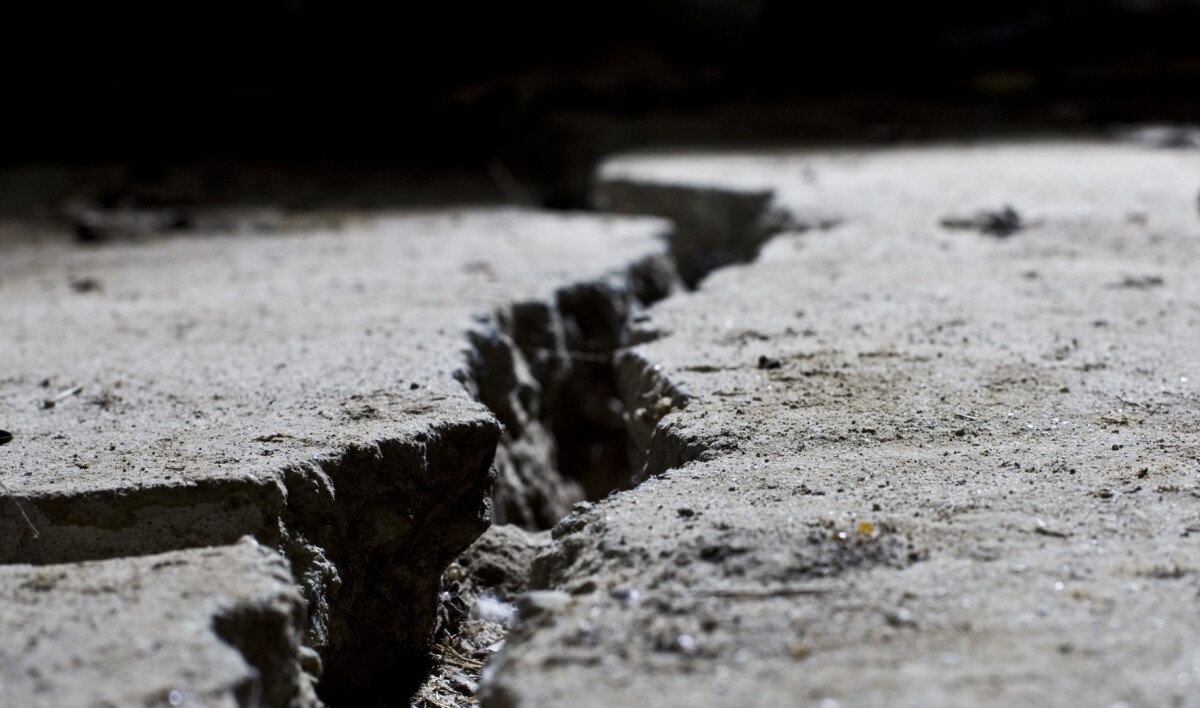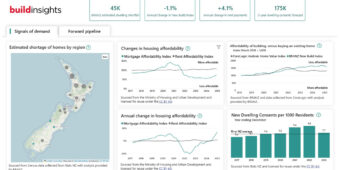MANAGING GEOTECHNICAL RISK
28 Oct 2020, Learn, Prove Your Know How, Technical

Ground conditions are a factor in building developments and must be assessed for any potential risk. To identify, mitigate and avoid problems, it makes good sense to hire a geotechnical professional for advice on site selection and development
It is critical to any building development, whether an addition to an existing house, a new house build or a multi-storey building, to consider the ground conditions of the site and any risks they may present.
GROUND CONDITIONS INFLUENCE SITE SELECTION
Ground conditions can influence the selection of the site and the layout and form (shape and size) of buildings built on it. Often an architect or structural engineer is appointed to look at the feasibility and concept design of a project. They will be responsible for identifying where the ground conditions present a risk and for recommending a geotechnical professional.
It is wise to engage a geotechnical professional at the beginning of a project to advise on ground conditions and the constraints that these impose on the development.
RISKY GROUND CONDITIONS
We often see damage to buildings in New Zealand from poor ground conditions. These could have largely been avoided with early geotechnical advice that had been taken and acted on.
Fills
Settlement of fill is a common problem that can continue to occur years after the fill was placed – either because it was poorly compacted, or because its weight compresses the underlying natural ground. Fills also frequently perform poorly under earthquake shaking.
Expansive soils
Auckland, Northland and other parts of New Zealand have soils prone to shrink swell. The drying effect of the summer months, or of trees, causes the soil to shrink. Any houses sitting above them will settle, causing jamming doors and cracked plaster. In some cases, dry soils can swell upon wetting and cause similar damage.
Peats and organics
Peats can be hidden beneath the surface and are common in low-lying and coastal areas around New Zealand. Earthworks filling of only a few hundred millimetres can trigger these peats to settle, and this can continue for years.
Settling ground dragging down piles
A common foundation solution for buildings over ground prone to settlement is to drive or bore piles down to solid ground, although this alone may not solve the problem. As the ground settles around the piles, it can drag them down, causing the building to settle.
A geotechnical engineer will design piles that specifically allow for these drag-down effects.
Ground settling around piles
Settling ground presents another common issue with piled foundations. The ground around the building will continue to settle, causing many problems around the perimeter of the building, such as broken pipes and separation of entrance steps. This settlement potential must be identified and connection details developed to allow for it.
Liquefaction
While we all saw the effects of liquefaction in Christchurch, unfortunately, the risk of liquefaction is by no means limited to that city. Councils have hazard maps identifying areas prone to liquefaction, but these are an indication of risk only. It would be prudent to have the map interpreted and the site investigated by a geotechnical engineer or engineering geologist.
Slope instability and creep
If not properly designed and formed, cut and fill slopes can slip or creep, resulting in damage to land and buildings. Steep temporary cut and fill slopes formed during construction can be particularly hazardous. Depending on the geology, natural slopes can be prone to creep, even on gentle gradients. Extreme rain or earthquake events can trigger slips. Engineering geologists are trained to identify potential slope hazards by studying the geology and the contour of the site’s surface (geomorphology).
Erosion
Coastal and river erosion can damage land and undermine buildings. Depending on the geology, land can be prone to surface erosion or even erosion beneath the surface. This subsurface erosion can form tomos (sinkholes) and voids, resulting in subsidence (surface slumping). Underground mining can produce a similar hazard.
Other geohazards
Other geotechnical hazards to be considered include variable and/or weak ground conditions, falling debris, ground rupture due to earthquake faulting and deflection of retaining walls.
PROJECT STAGES AND GROUND CONDITIONS
Geotechnical advice is likely to be required throughout a building development and particularly early in the project when any constraints on development that are identified can be most efficiently addressed.
The project stages of inception, design and construction are listed below, along with the associated geotechnical advice.
Inception
This is where the site is selected and the layout and form of a building development is decided. It is important to understand the geotechnical hazards and the constraints these may impose at this stage. In the case of a recent subdivision, there may be an existing geotechnical report providing this information.
There may be covenants on the site’s certificate of title imposing building restriction lines or other means of applying constraints to avoid geotechnical hazards. If such information is not available, a geotechnical professional should undertake an assessment.
That professional is likely to undertake a desktop study and site inspection, plus possibly some physical investigations. The desktop study could include review of aerial photographs, geological maps and available geotechnical data. It may include discussions with locals to understand the site history.
From this initial study, the geotechnical professional can identify geotechnical issues and work with the client, architect and structural engineer to develop a concept for the building development. A geotechnical report may be needed in support of any resource consent application required.
Design
During the development of the design, the level of involvement by the geotechnical professional varies depending on the complexity of the project and of any geotechnical issues to be resolved. A geotechnical report and associated producer statement design (PS1) may be required in support of the building consent application.
Construction
It is important during construction of any foundations that inspections and testing of the ground is undertaken to verify the assumptions made during design. A producer statement construction review (PS4) is likely to be required to support the application for Code compliance. Depending on the complexity of the project, geotechnical issues and requirements of the council, this PS4 and associated construction observations may require a geotechnical professional.
WHO ARE GEOTECHNICAL PROFESSIONALS?
Geotechnical professionals include engineering geologists and geotechnical engineers, who normally work together. The engineering geologist focuses on geology and identifying the ground hazards while the geotechnical engineer focuses more on the consequences of these hazards for the development and how they can be mitigated.
There is a lot of overlap between these two professions and either can lead the assessment and mitigation of geotechnical hazards. It is recommended that either a professional engineering geologist (PEngGeol) or a chartered professional engineer (CPEng) with a practice field of geotechnical be engaged to lead the geotechnical work.
Sources for geotechnical advice
The following is a list of sources for advice on resolving geotechnical issues for a building development.
NZS 3604:2011 Timber-framed buildings provides standard design details for timber-framed buildings (including their foundations) for compliance with the Building Code. Its intended audience is builders, architects and engineers. These foundation details only apply for specific types of buildings and only when it can be shown that the foundations will be on ‘good ground’, which is defined in the document. For other types of buildings and where good ground is not present, specific design by an engineer is required.
AS 2870-2011 Residential slabs and footings. If the soils are prone to shrink swell and not good ground as defined in NZS 3604:2011, building designers are referred to AS 2870-2011, which requires the use of a shrink swell test. Unfortunately, this test has proven to be unreliable for use on soils in Auckland and Northland. In these areas do liquid limit and linear shrinkage tests as set out in NZS 3604:2011.
If the results show the soil is not ‘good ground’ because of expansivity, determine the Plasticity Index (by doing a plastic limit test) and the percent clay. Provide this information to an experienced geotechnical engineer, who can look at the site context and provide specific foundation advice.
NZS 4404:2010 Land development and subdivision infrastructure sets out the requirements for design of infrastructure for land development and subdivisions, when involvement of a geotechnical professional is required and the scope of that involvement through design and construction.
NZS 4431:1989 Code of practice for earth fill for residential development describes earth fill practices to produce fills of satisfactory stability for residential development. It sets out when a geotechnical professional is required and the scope of that involvement through design and construction.
Planning and engineering guidance for potentially liquefaction-prone land, 2017, published by MBIE, provides guidance for risk-based assessment of liquefaction for development of regional and district plans, and resource and building consent assessments.
Earthquake geotechnical engineering practice modules, 2017, New Zealand Geotechnical Society. This series of six modules provides geotechnical engineers with guidance on investigation and design allowing for earthquakes.
For more: To find a geotechnical professional visit www.engineeringnz.org/our-work/working-engineer or www.nzgs.org/about-us/find-a-pro.
Article by Stuart Palmer, Technical Director, Geotechnical Engineering Tonkin + Taylor. This article was first published in Issue 179 of BRANZ Build magazine. www.buildmagazine.org.nz. Words and figures supplied by BRANZ
Register to earn LBP Points Sign in
2 Comments
Leave a Reply
You must be logged in to post a comment.




Building support
done